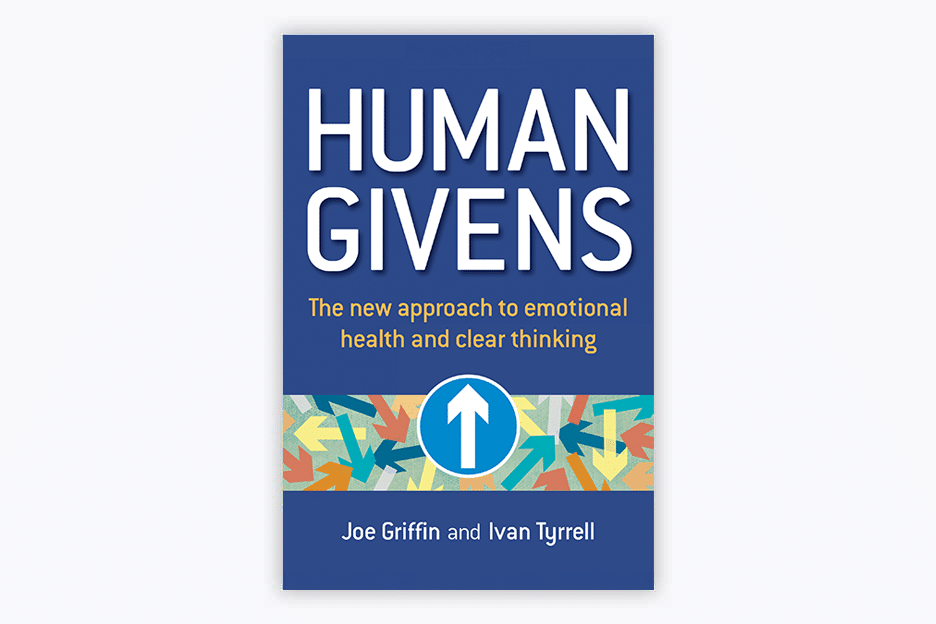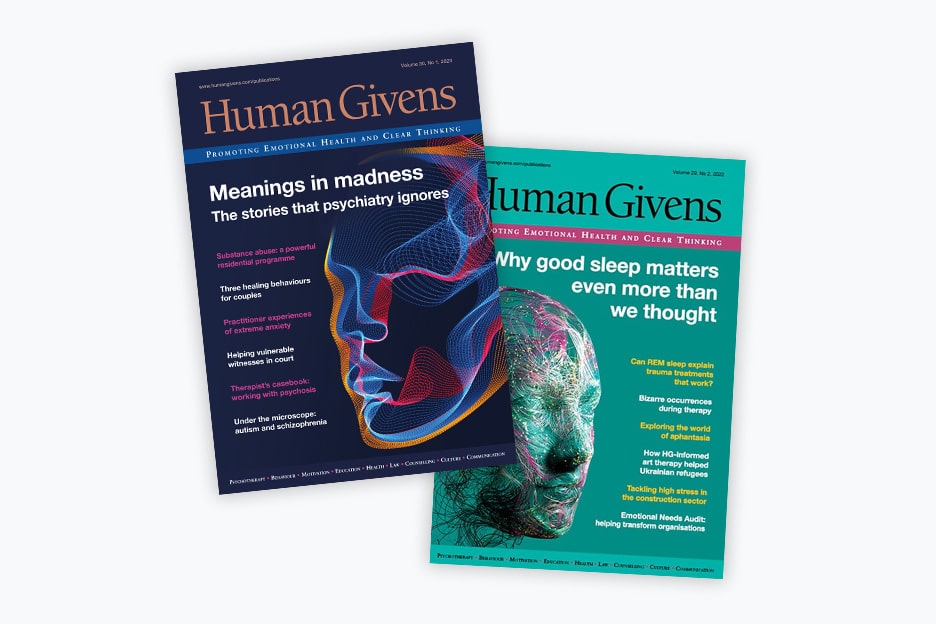Why human givens practitioners use RIGAAR
Good therapy must have a structure. Human givens practitioners use the powerful RIGAARTM model, developed by HG co-founders Ivan Tyrrell and Joe Griffin, to guide their sessions. Abiding by RIGAARTM (an acronym for the essential steps of rapport building, information gathering and giving, goal setting, accessing resources, agreeing strategies and rehearsing success) ensures that clients are focused from the outset on understanding why they are experiencing the symptoms they bring and how they can make concrete changes to recover wellbeing.
R
Rapport building is an essential first step in any meaningful communication, and particularly in therapy, where people are revealing deeply personal and often distressing details of their lives. They need to feel safe, listened to and respected, and human givens practitioners are taught how to ensure this happens as quickly as possible.
I
Information gathering must be relevant and useful. The kinds of questions a human givens practitioner asks will not only throw light on why the problem is occurring now and in its current form but, by focusing the client’s attention in a different way, start the process of widening their perspective and bringing about change. Relevant information giving is crucial in this. Understanding, for instance, why anxiety or depression or anger outbursts occur leads a person to recognise that, with help, they can take back control and start to do things in a different way.
G
Goal setting directs a client to identify something specific that they want to be doing differently. So, rather than the almost meaningless ‘I want not to have depression’, the therapist will be looking for what the client would do if they didn’t have depression – such as go out with friends, take up sport again, get back to work or even, if there is a need to start small, just make a phone call or get out of bed when the alarm goes off. The goal creates the focus for the rest of the therapy, and is easily measurable.
A
Accessing resources, although listed fourth, goes on throughout the entire session. It means that the practitioner will be alert to uncovering anything about the client which shows abilities, strengths or positives of any kind that can usefully be drawn on in the future. This may be done by direct questioning and also through careful observation and listening.
A
Agreeing strategies. This is how the client and practitioner establish how the goal can be achieved. If a client is nervous about giving a presentation, for instance, the strategies will include learning and practising calming-down techniques as well as ways to handle unhelpful, negative thoughts and, if appropriate, practical strategies for preparing and giving effective presentations. Rehearsing success will almost always be one of the strategies.
R
Rehearsing success is a critical element of human givens therapy sessions. It means enabling a client to rehearse, in imagination, putting the agreed strategies into practice and coping effectively with any setbacks that might arise. It is also a means of reminding the client of their many resources and bringing them back in touch, emotionally, with how it felt to be confident, caring or have a meaningful job – or whatever the issue may be. The most powerful way to do this is in guided imagery, a form of focused relaxation tailored to the individual. All human givens practitioners learn the language skills that make this a powerful process leading to positive change. The client thus leaves the session with genuine hope and expectation that their lives can be different.





